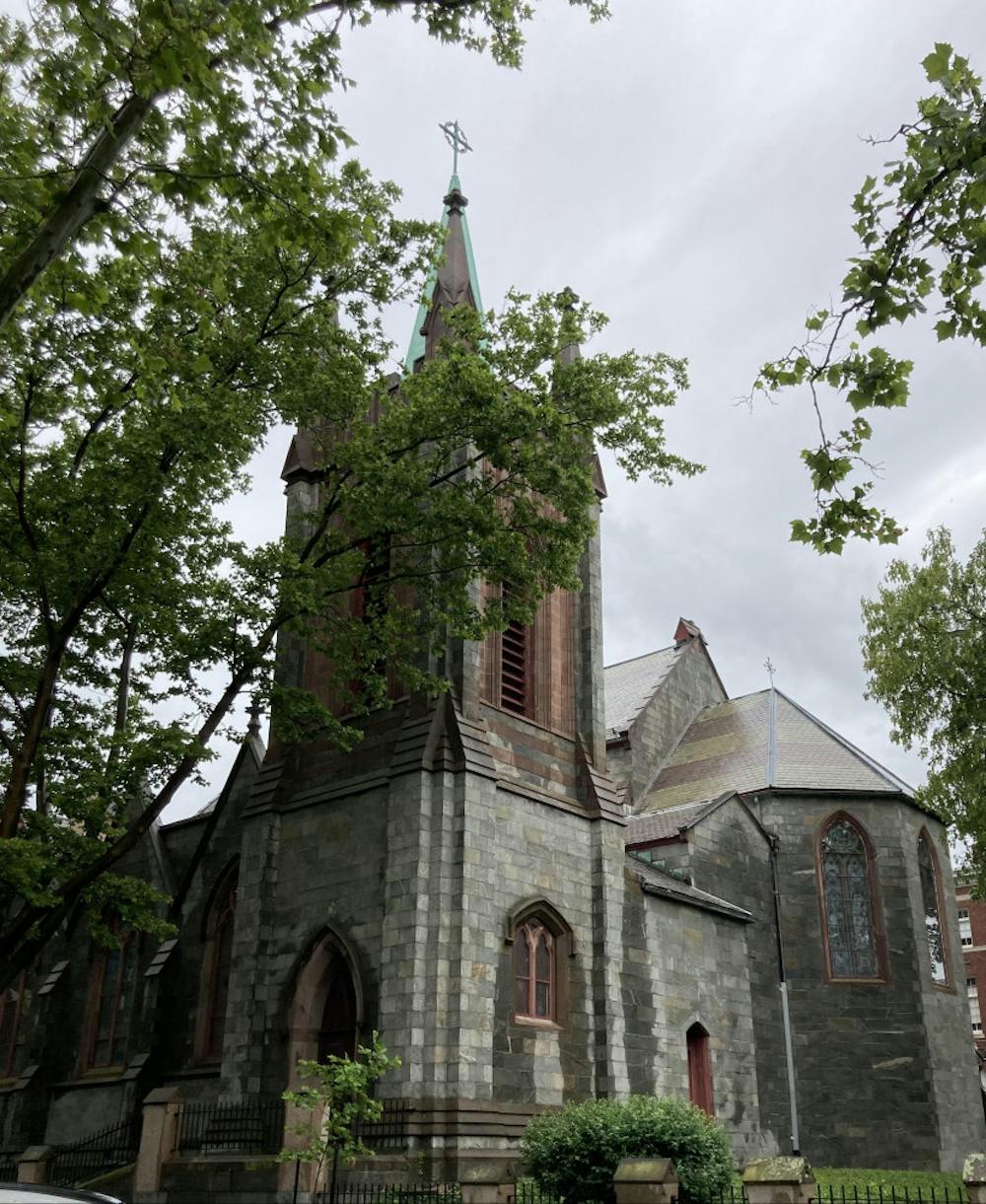James Busby stood conducting in the center of the room, listening to the thirteen voices blending in the morning air around him. Precise harmonies, invigorating crescendos, joyous voices — it was the St. Stephen’s Church choir’s largest rehearsal since the pandemic began.
“There are so many people in here,” one singer remarked when she arrived at the rehearsal. “It’s wonderful!”
As Rhode Island has rolled back restrictions on gatherings, some Providence churches have carefully eased their own rules, while others have largely maintained pandemic operations.
St. Stephen’s Episcopal Church, which has served the Providence community from its George Street location since 1862, has spent months making do with limited-capacity choirs of about five or six people. But on May 23, Busby, the choir’s director, allowed 13 singers back into the small practice room for the first time since COVID-19 disrupted church services.
While it is still not a full choir, it’s considerably better than before, Busby said.
After exchanging hugs, smiles and refrains of “It’s been so long” and “How are you?,” the choir began to rehearse John Sheppard’s 16th century chant ‘Plainsong Mass for a Mean’ in preparation for the mass that would be held in two hours.
That morning’s service would also allow attendees to sing along for the first time since March 2020. For Busby, Sheppard’s mass was a fitting choice. “Chant is healing,” he said.
But beyond the music, the pandemic still clearly shapes mass at St. Stephen’s. Though the state no longer mandates masks for vaccinated people, St. Stephen’s has continued to require all parishioners to wear masks during services.
The church made this decision “to take into account people who haven’t been fully vaccinated,” says Fr. Bill Locke.
Similarly, at Congdon Street Baptist Church, the pandemic is still a constant consideration in daily operations.
According to Deacon Dennis Price, the church has been holding two online, pre-recorded services every Sunday. A third is held in-person and outside in the church’s parking lot. Attendees can choose to sit in chairs set up six feet apart, or they can stay in their cars and hear the service through their radios, Price said.
The church plans to continue with this system until September, partly because the inside of the church is undergoing construction, but also because Price still feels apprehensive about moving services inside, he said.
Though infection rates are decreasing, Price said, the remaining prevalence of the disease should encourage people to continue to limit their interactions and hold off on returning to pre-pandemic activities.
Leaders of the First Unitarian Church of Providence, which will not host in-person services until late in the summer, share Price’s concern. Senior Minister Rev. Elizabeth Maclay cited low vaccination rates among people of color as evidence for what she sees as the social responsibility of the church to remain careful amid the state reopening.
According to the Rhode Island Department of Health, 49 percent of white Rhode Islanders are fully vaccinated, compared to 34 percent of Black or African American residents and 35 percent of Hispanic or Latino residents.
Maclay said the church has to think about the greater Providence community, not just the members of First Unitarian, when planning how the church will proceed with its services. “I would close the church forever if that was what was required to keep people safe,” she said.
The church’s bridging team, which makes COVID-19 safety recommendations to its board, thought that the Centers for Disease Control and Prevention’s removal of the mask mandate was “hasty,” Maclay said.
But Maclay’s caution does not diminish the loss she feels from the absence of in-person services.
There is “a serious harshness” to preaching to a virtual audience, she explained, adding that it was difficult for her to offer support to members virtually. The difference between being able to hug someone and having a Zoom meeting with them is “night and day,” Maclay said.
Price agreed, saying that some of Congdon Street’s members have felt “forgotten about,” as it is difficult for the church to maintain a sense of community over virtual mass. Attendance of both online and in-person masses is lower than it was in normal circumstances, he added.
Even for St. Stephen’s, which now allows a congregation at full capacity, attendance is still down, Locke said.
The continued impact of the pandemic on St. Stephen’s was on display during the May 23 Sunday mass. Throughout the service, the choir’s pitches flowed in communion with each other, melding in uplifting harmonies that filled the chamber fit for 400, with just over 30 people present singing along through their masks.

ADVERTISEMENT




